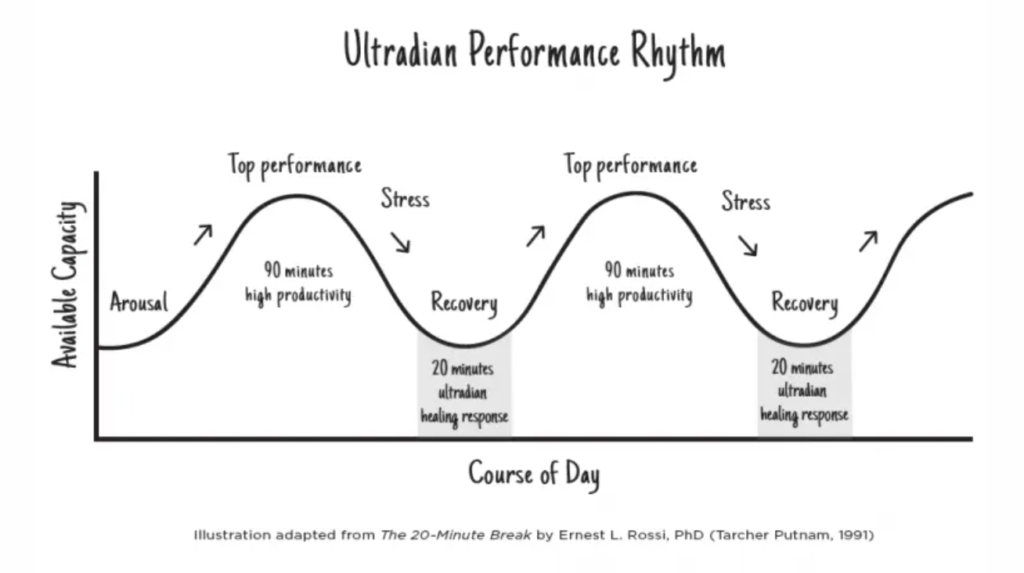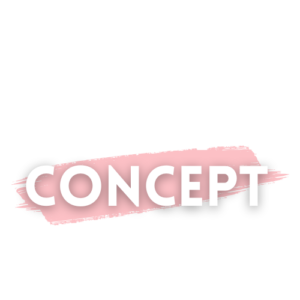Work Smarter, Not Harder: Embracing Ultradian Rhythms for Startup Success

You know that burst of energy you feel every morning? That’s what we call the “morning peak.” It’s when you’re all revved up to take on your goals and ready to tackle even the trickiest tasks, like really diving into stuff that needs deep thinking and creativity, such as checking if our product fits what the market wants.
But here’s the thing, as the day goes on, that energy kind of deflates like a balloon. We call this the “afternoon valley.” It’s like our brainpower takes a bit of a nap, and it can be tough to keep up the same high levels of getting-stuff-done-ness.
Remember, it’s totally normal for our energy to do this rollercoaster thing. It’s not that we’re just naturally lazy or unproductive when this happens. Our bodies are just telling us they need a bit of a breather.
This whole cycle of energy ups and downs has a name: “ultradian rhythm.” It’s basically our body’s way of saying, “Hey, I need a break, and that’s A-OK.” So, don’t worry if you’re not on fire all day long – it’s just your natural groove doing its thing.
A Quick Intro
So, let’s talk about this idea of “sustained productivity” – you know, the notion of always churning out work like a never-ending machine. But guess what? It’s not as great as it sounds. In fact, it’s a bit of a fairy tale. Why? Well, because it’s just not realistic. We’re not those cute little energizer bunnies that can keep going and going without any consequences.
But don’t worry, we’re here to debunk that myth. Instead of trying to be those nonstop bunnies, let’s embrace something more real and natural – the ups and downs in our energy, kind of like the rhythm of waves.

Ref: Pilar Gerasimo
Diving Deeper into Ultradian Rhythms
Ever heard of ultradian rhythms? They’re like these cool mini-cycles that happen faster than the big daily rhythm your body follows. These rhythms are like the conductors of your focus, critical thinking, and attention. Just like your heart has its rhythm, your brain and body do too. These patterns are key to keeping everything running smoothly.
But here’s the twist: trying to stretch this super-focused phase doesn’t work out too well. It’s like squeezing too much juice from an orange – you end up with not-so-great juice. Your focus slips, mistakes creep in, and eventually, you hit the dreaded burnout zone.
Even the most enthusiastic startup teams can fall into the trap of overdoing it. Balancing those turbo-charged phases with well-deserved breaks is the real secret sauce. And that’s where the “resting phase” comes in to save the day. This is when your brain takes a breather, and guess what? It’s not a bad thing. In fact, it’s necessary. Taking a quick break – maybe a short stroll, some calming meditation, or just changing your scenery – lets your brain recharge and process info like a champ.
How Does This Whole Thing Work Anyway?
Alright, picture this: you sit down to work, you’re in the flow, totally focused on your task. You’re like a superstar, nailing things left and right. And this awesome phase? It lasts for about an hour and a half to two hours – think of it like a super-concentrated burst of energy.
But, here’s the kicker – as you’re rocking the productivity train, stress factors start sneaking in like uninvited party crashers. These little stress bits build up, and that’s when things take a slight dip. It’s like a rollercoaster heading down a bit – this phase is what we call the “ultradian trough,” a fancy name for a drop in energy.
Suddenly, your mind’s like a butterfly, hopping from thought to thought. Tasks that were a breeze now feel like you’re climbing a mountain. And your stomach’s joining the party with some hungry growls. You might find yourself bouncing your leg or drumming your fingers – sitting still? Nah, not today. Thoughts like, “Wait, what was I just thinking?” or “Why is everything so annoying right now?” start popping up. Oh, and keeping your eyes open feels like a heroic feat.
And guess what? This is when the first round of the cycle wraps up. It’s like hitting pause after a thrilling scene. But don’t worry, it’s all part of your body’s natural rhythm.
Why Should Startup Teams Care About This?
Understanding and using the whole ultradian rhythm thing can give your startup team a real boost in the productivity department. We can totally work with these cycles to our advantage.
Imagine founders being the wise conductors. They can encourage everyone to take short, regular breaks that line up with these natural waves of focus and fatigue. It’s like hitting refresh on your brain, optimizing your focus superpowers. When we recognize that each person has their own unique energy peaks and valleys, we can assign tasks at the perfect times for them.
So, what’s the big win? Startup teams that get cozy with these rhythms may become productivity wizards. They’re not just slogging away – they’re making magic happen by working with their bodies’ natural groove. And what comes next? Innovation and success.

Ref: Pilar Gerasimo
Summary
Instead of chaining ourselves to tasks for hours, we can amp up our productivity by flowing with our body’s natural rhythms. This tweak not only boosts output but also boosts our overall well-being. To make this work, sync your schedule with these rhythms. Take a stroll, meditate, gaze at nature, or chat about non-work stuff with your teammates.
According to LinkedIn’s Global Talent Trends report, work-life balance is a top factor for job candidates, so you can really win some important points by respecting your future talents’ flexible shedules.
Ultradian rhythms aren’t just cool science – they’re your startup’s secret weapon. No need for a major overhaul; just tweak tasks to match your brain’s flow. Neglecting your team’s rhythms? That’s missing out.
If a spot on the “Best Companies to Work For” list appeals to you, embrace these cycles. Strategic breaks unleash productivity, creativity, and well-being. It’s a win-win for everyone – team and company alike.
